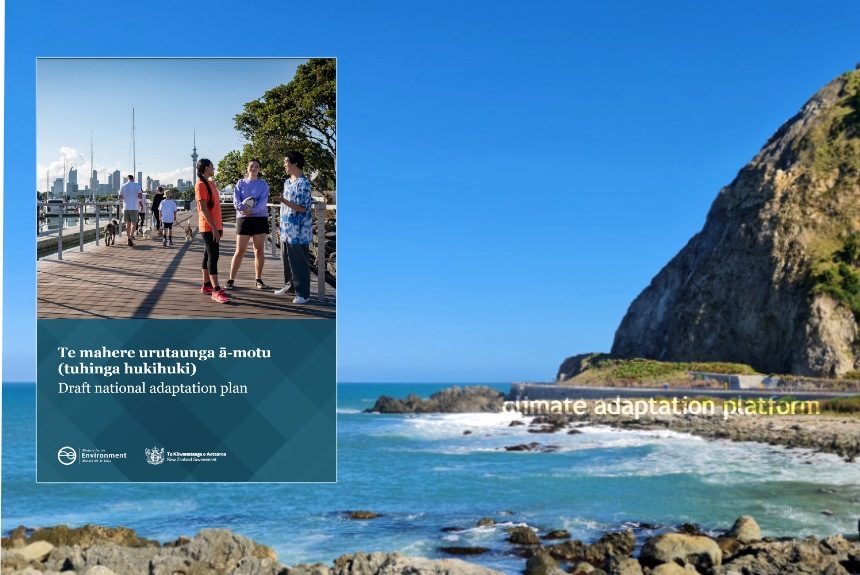New Zealand is already facing the impacts of climate change. In the last few months, NZ has seen massive floods, such as those in Tairawhiti; storms, such as those experienced recently in Westport; fires in the Waituna wetlands in Southland; and droughts right across the country, said the Ministry of Environment Minister, James Shaw (Neilson, 2022).
New Zealand’s draft national adaptation plan highlights the climate change impacts in the country and identifies priority risks and how to address these risks.
“The draft plan sets out coordinated and comprehensive actions to support all sectors and communities adapt to the locked-in impacts of climate change, like rising sea levels and more frequent and severe weather events”, the Ministry for the Environment news release says.
According to the draft plan, the country has already warmed by 1.1° Celsius in the past 100 years, and it will experience more hot days and fewer cold days, with 2016 as its warmest year on record.
The document identifies the following climate change impacts the country is already facing and will continue to face in the future, such as:
- sea-level rise at the rate of 2.4 millimetres each year will also bring coastal erosion and flooding,
- extreme weather events in the form of storms,
- heatwaves, and heavy rainfall, which will become more frequent and intense,
- the number of frost and snow decreasing, and
- drought and wildfire events will continue to increase.
Shaw estimates that climate change losses in the country’s properties and assets in coastal areas are around $145 billion, affecting lives, incomes, homes, businesses and infrastructure, and will exacerbate inequalities, including for Māori, Pasifika, women, disabled people, youth, older people, and low-income groups (Neilson, 2022).
New Zealand’s 2020 climate change risk assessment report finds that 675,500 Kiwis live in flood-prone areas, and an additional 72,065 live in the areas facing the highest impacts from sea-level rise.
The national adaptation plan does not denigrate the urgency of reducing emissions as doing so would lessen the planet’s warming, and with this in mind, the country is set to release the most-awaited Emissions Reduction Plan outlining how New Zealand will achieve the net-zero target in 2050 to keep global warming below 1.5°C.
The document notes that New Zealand’s first national adaptation plan “brings together in one place the Government’s current efforts to help to build our climate resilience. And it sets out a proposed future work programme, indicating our priorities for the next six years” and “a very important milestone in the journey of every New Zealander to resilience and adaptation. It sits alongside the emissions reduction plan, and together they lay out New Zealand’s overall response to climate change so that we can transition to a low-emissions, climate-resilient future.”
With the draft climate adaptation plan’s release, the NZ public is expected to engage and present submissions until June 3.
For more details on the draft NZ Climate Adaptation Plan, click on the link to the document provided in the “Source” section below.
Source:
Neilson, M. (2022, April 27). NZ climate change adaptation plan to tackle costs and who pays as extreme weather events, managed retreat becomes reality. NZ Herald. Retrieved from https://www.nzherald.co.nz/nz/nz-climate-change-adaptation-plan-to-tackle-costs-and-who-pays-as-extreme-weather-events-managed-retreat-becomes-reality/EKYJHURUOBUU73EQSZ63JJFUJQ/
Ministry for the Environment. 2022. Draft national adaptation plan. Wellington: Ministry for the Environment. Retrieved from https://environment.govt.nz/assets/publications/Draft-national-adaptation-plan.pdf



Leave a Reply